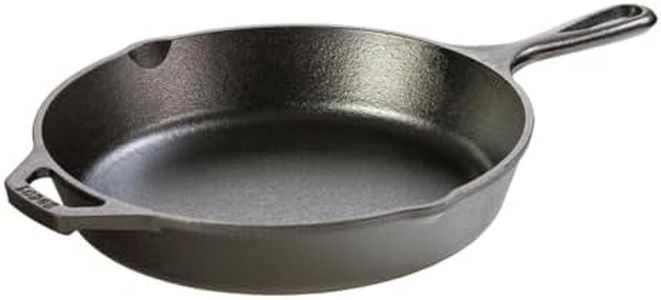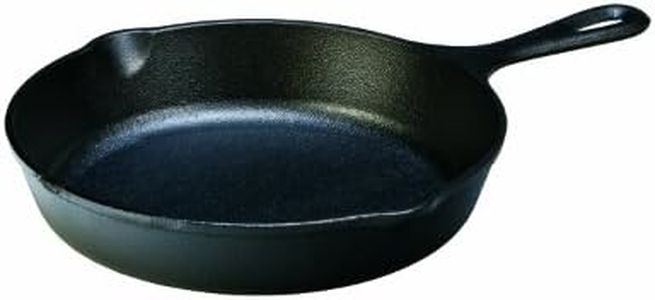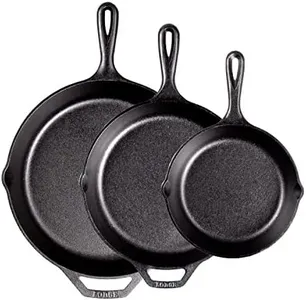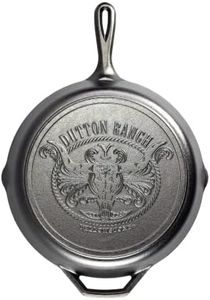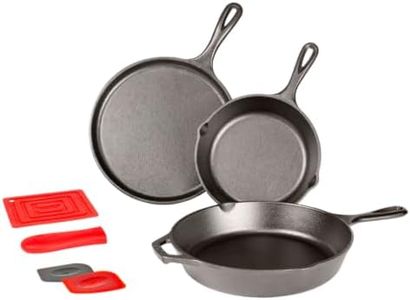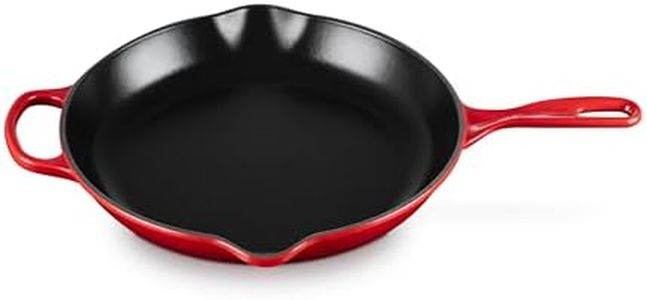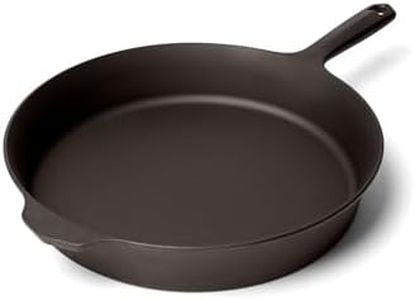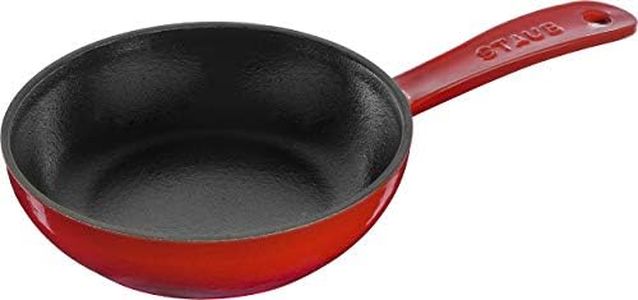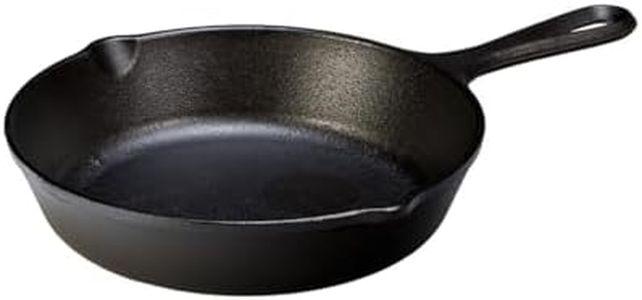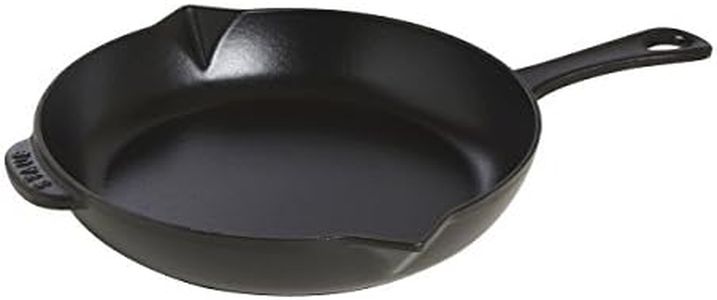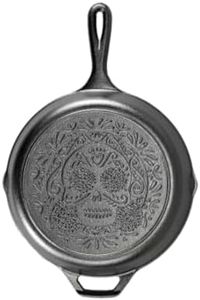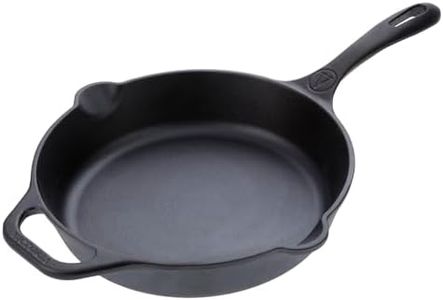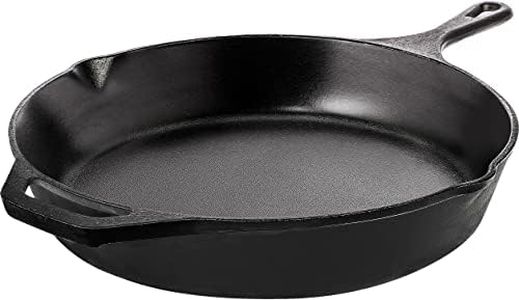We Use CookiesWe use cookies to enhance the security, performance,
functionality and for analytical and promotional activities. By continuing to browse this site you
are agreeing to our privacy policy
10 Best Cast Iron Skillets
From leading brands and best sellers available on the web.By clicking on a link to a third party's website, log data is shared with that third party.
Buying Guide for the Best Cast Iron Skillets
Choosing the right cast-iron skillet can make a big difference in your cooking, no matter your experience level. Cast-iron skillets are known for their durability, versatility, and ability to retain heat, making them a favorite for many types of dishes, from searing steaks to baking cornbread. However, with several sizes, weights, and design options available, it helps to understand what features will best suit your cooking needs and style to make an informed decision.Size (Diameter)The size of a cast-iron skillet, usually measured in inches across the top, determines how much food you can cook at once. Small skillets, around 6 to 8 inches, are great for making single servings or cooking side dishes. Medium skillets, between 9 and 10 inches, offer more flexibility for cooking meals for two or small families. Large skillets, 12 inches and above, are ideal for family-sized meals or when you need to cook in batches. To pick the right size, think about how many people you usually cook for and whether you want your skillet mainly for side dishes or as a primary cooking pan.
WeightCast-iron skillets can be quite heavy, and this is both a benefit and a challenge. Heavier skillets hold heat better for even cooking, but they can be cumbersome, especially when lifting, pouring, or cleaning. Lighter skillets are easier to handle but may not heat as evenly. If you want the best sear or plan to cook foods that need steady, high heat, a heavier skillet is a good choice. If ease of use and maneuverability are more important, you might prefer a lighter option, particularly for everyday cooking tasks.
Pre-seasoned vs. UnseasonedSeasoning refers to the protective layer of oil baked into the skillet's surface, creating its natural nonstick properties. Pre-seasoned skillets come ready to use, which is convenient for beginners and saves time. Unseasoned skillets require you to season them before cooking, which takes extra effort but lets you control the seasoning process. If you prefer a skillet that's ready straight out of the box, look for pre-seasoned. If you enjoy customizing your cookware, an unseasoned skillet could be satisfying.
Handle DesignThe handle of a cast-iron skillet affects how comfortable and safe it is to use. Some skillets have short, thick handles, which can be sturdier but harder to grip with potholders. Others feature longer or ergonomically shaped handles that are easier to hold and maneuver, but they may not fit in smaller ovens. Many larger skillets also add a secondary 'helper' handle opposite the main handle, making lifting much easier. Consider your hand strength, oven size, and how often you need to move the skillet when choosing a handle design.
Pour SpoutsPour spouts are small notches or projections on the edge of the skillet, designed to help drain off excess liquids or fats easily. Skillets with pour spouts offer more precise pouring for sauces or when discarding grease, which is useful if you cook dishes with a lot of liquid. If you often make gravies, pan sauces, or fry foods, pour spouts can be a valuable feature. If you mainly use the skillet for dry cooking (like baking or sautéing), this feature may be less important.
DepthThe depth of a cast-iron skillet determines how much food you can fit vertically and affects how well you can cook foods like stews or deep-dish pies. Shallower skillets excel at searing, frying, and making foods that benefit from a large flat surface, while deeper skillets are better for recipes with liquids or more layers. If you're planning to use your skillet mainly for frying, sautéing, or baking flatbreads, a skillet with less depth should do. But for stews, casseroles, or baking, look for a deeper skillet.
